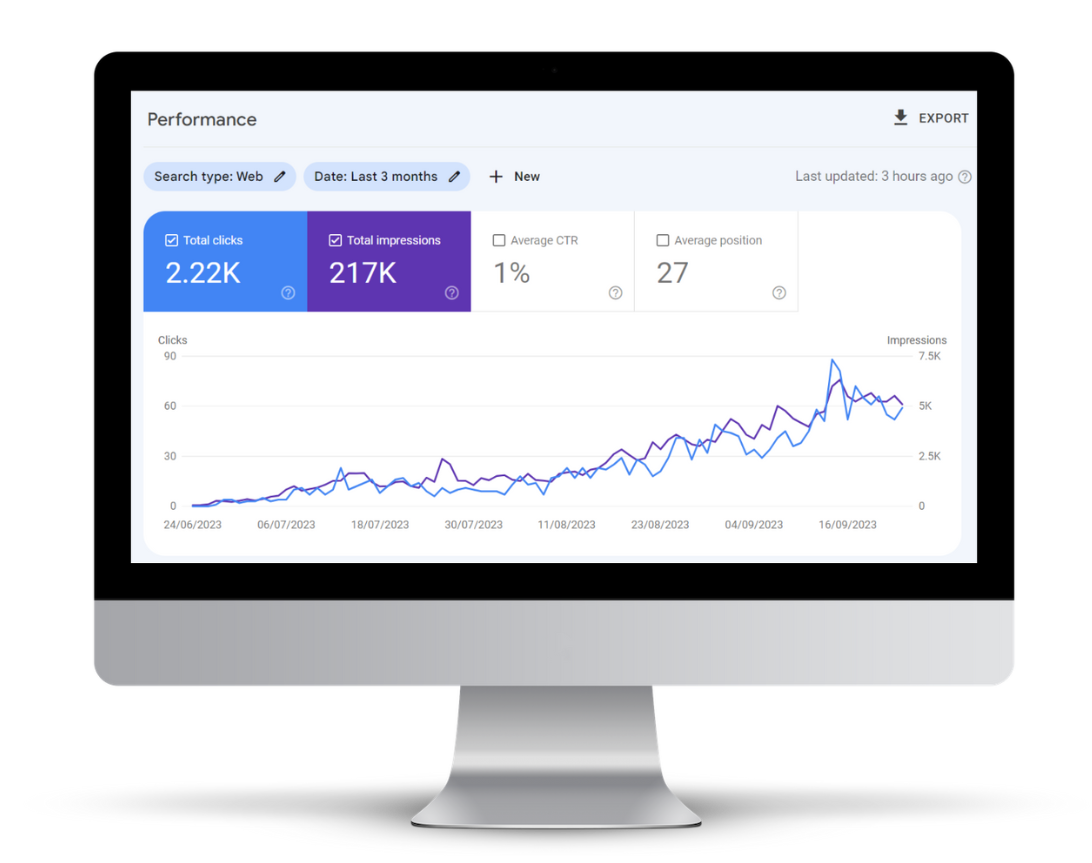All businesses want their website to bring in more sales or leads. They use Search Engine Optimisation to achieve this. It’s easy to see when a large proportion of the population search for services through Google.
SEO companies in Melbourne will tell you that you need them to succeed in the world of SEO. Your local SEO agency will implore you to consider the experts who know all things SEO and will charge you handsomely for it. We do it too, SEO can be a very difficult task.
However, we feel that our SEO services can benefit your business. We want to give you the chance to be your own SEO consultant.
As such, this article, with every article after this will include vital steps you will need to take in order to do your own SEO.

What is SEO?
Search Engine Optimisation involves the increase of both quantity and quality of organic traffic through search engine results largely through Google and Bing. The goal for businesses is to get their website ranking for keywords and phrases relevant to their audience’s search intent.
The reason that SEO agencies are so prevalent in areas like Melbourne is that SEO is crucial for enhancing website visibility, establishing content credibility, and driving organic traffic. Which when put into an overall SEO strategy, plays a significant role in digital marketing strategies for better ROI.
As such, high-quality content, compliant with Google’s E-A-T guidelines, is essential for effective SEO, especially for sensitive topics. SEO is a powerful marketing tool. It helps reach potential customers during key decision-making moments. It offers insights for optimization through competitive analysis, giving a competitive advantage.
Key Components of SEO
On-Page SEO
This aspect of SEO refers to changes that can be made to the website that your customers see so that the website can rank better. This includes simple factors such as the content on your website but also includes the title tags and heading you use to the keyword relevance you have with your audience.
Off-Page SEO
Conversely, off-page SEO is the actions taken outside of your website to increase its authority in the search engines of being a reputable website that provides value to your audience. This is mainly done through backlinking.
Technical SEO
Finally, technical SEO is the optimisation of the infrastructure of your website for crawling and indexes which is done by Google. Factors that affect technical SEO include website speed, mobile friendliness, website architecture, and ensuring a secure connection, among other things.
Keyword Research
Once you’ve learned the basics of SEO, your next step is to grasp the significance of keyword research. You can then use various tools and techniques to develop a keyword strategy that works for you.
The importance of keywords
Conducting keyword research as part of your SEO strategy is vital in discovering what search results you want your website to rank for. If you have an audience that is searching for services but using a different term to do so through search volumes then maybe you need to focus on switching the terms you use.
Using programs like Semrush allows you to at least estimate how well you are ranking and what keywords you need to focus on. If you want to become a true SEO consultant for your own business Blufire highly recommends using Semrush. If you want to find out more about Semrush check it out here.
How to do keyword research.
- Broad Topic Recognition
First, you need to decide what broad topics are relevant to your product/service that people will be searching for in a very rough sense. What we recommend is to create a spreadsheet with general categories that are relevant to your business and be sure to include no more than 10 topics.
- Create a phrase list
Identify terms and phrases that your target customers might use and keep them in line with the broad topics you have selected, this is where you can use platforms like Google Search Console to find out what that looks like or if you have Semrush you can use that.
- Find Related Search Terms
Use Google and other tools like AnswerThePublic to find related search phrases and expand your keyword list. These platforms have access to data on who is searching for what and the volume of those searches.
- Analyze the Strength of Your Keywords
Once you have your list, use tools like Google Keyword Planner to analyze the relevance of your keywords. Consider factors like search volume, competition, and relevance. Paid SEO tools such as Ahrefs and Semrush can also be helpful. This is where you will discover if your initial list of keywords is relevant to your audience.
- Competitive positioning and adjustment.
It is important to consider the market and where your competition stands. This is where you will need to be able to assess your competitive position in the industry. Additionally, you will need to constantly adjust your keywords focusing on less competitive long-tail keywords if necessary.

On-page SEO
This aspect of SEO is focused on the website your customers see and what Google recognises when it does its crawls.
Steps to achieve on-page SEO
- Quality Content
It is important to make sure whatever you write on your website that the content is engaging and helpful for the person reading your website. Google’s E.E.A.T. guidelines encourage websites to pursue experience, expertise, authoritativeness, and trustworthiness. When you try to appeal to your target audience, make your content follow these guidelines.
- Optimising titles, headings, and meta descriptions
Title tags, headings, and meta descriptions. Nonsense unless carefully explained. Each individually important in the scope of on-page SEO
Title Tags
Think of this as the name of your webpage that you see at the top of your browser and in search results on Google. The result tells people and search engines what your page is about. This has to be done manually on your website
Headings
These are like the titles and subtitles in a book, organizing your webpage’s content to make it easier to read and understand. This can be achieved in various fashions depending on which platform you have used to make the website.
Meta Descriptions
This is a summary of your webpage that appears under the title in search results. This gives readers on Google a quick insight into what the page contains. You will need to edit these as you edit the title tags.
- Optimise images
Using software that allows you to edit the file size of the images, this makes sure the pictures on your webpages are not too large as this can slow down the website. The images also need to be relevant to your content, so your page looks good and loads quickly.
- Use alt tags
Alt tags are short descriptions you add to images on your website. They help search engines understand what the image is, which can improve your website’s visibility in search results.
Technical SEO

Technical SEO is a specific part of SEO. It requires knowledge of optimizing websites for desktop and mobile. This includes improving site speed by reducing image size. While initially complicated, a little more understanding can make this step quite easy to achieve.
Steps to achieve technical SEO
- Website Structure and Navigation
Website structure and navigation is the layout and map of a website, ensuring that the different pages on your website are arranged logically and are easy to find and move between, making it more user-friendly. Focusing on the user experience of the website.
- Mobile-friendliness and responsive design
Mobile devices are being used more and more to browse websites. This means that designing your website for mobile is vital to overall SEO performance. Make sure your website looks good and works well on all devices, especially smartphones and tablets. Your website should automatically adjust its layout to fit different screen sizes.
- Page Speed
If a website takes too long to load, you’ll likely leave without seeing its content. To keep people and search engines interested, make your website load faster using specific techniques.
Off-Page SEO Techniques
Off-page SEO refers to actions taken off your website to increase the efforts of SEO being done on both an on-page and technical side. Common actions include backlinks on other websites to your website, encouraging branded searches and social media engagement. All of these are to achieve the same outcome of getting the website to be more authoritative and useful for potential customers.
Steps to achieve off-page SEO
Building Backlinks
Backlinking is getting your website URL on another website as a form of referral in the sense that other websites recommend readers to click through to your website. The more websites link back to your site, the more search engines see your site as valuable and trustworthy. Be careful though, low quality links can degrade the value of your website.
Guest Blogging
Writing blogs for other websites is a strong strategy to improve your website’s SEO rankings. It’s a way to share your expertise with a new audience and often get a backlink to your site.
Social Media Engagement
Being active on social media is a strong technique for increasing SEO. This includes posting updates and interacting with your audience, which can drive more people to your website and improve its visibility.
Using Tools and Analytics
SEO tools allow us as agencies to track performance on a month-to-month basis and derive the changes we need to make to rank better for certain keywords and improve the overall strength of the website.
Essential Tools
Google Analytics/Google Search Console
Google Analytics and Search Console provide accurate data to tell you how your website is performing, how many clicks you are getting, your impressions, and which pages are getting those results. It’s not always the homepage as a page with information about your service is likely to attract more traffic than your homepage
SEMrush
SEMrush is also a useful tool that allows you to go deeper into the performance of not only your domain but other domains as well. You can compare performance to competitors and monitor keywords both in general and the ones specific to your website.
Interpreting Data
Agencies analyze data to draw conclusions about performance and plan next steps for SEO. For you to begin to understand this, any introductory SEO YouTube video would give you a common base knowledge of how to read the data like this one here. It can take some time but practicing and reading the information will only make you better with constant steps to improve your website’s performance.
Conclusion
Hopefully, by now, you have a brief grasp of SEO. Now can you start to be your own SEO consultant?
Maybe
But more importantly, you have to keep learning. If you know the difference between off and on-page SEO that is important but it is not the actual steps that are involved in making the changes. That takes more learning which you can do on the Blufire Learning Centre or use YouTube videos like the one we included in this blog. Either way god speed and hopefully by the time you are ready to do SEO you won’t need an agency like us to help.

